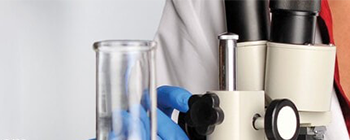Learn More
Integrin beta 5 Monoclonal Antibody (KN52), eBioscience™, Invitrogen™
Mouse Monoclonal Antibody
Supplier: Thermo Fisher Scientific 14049780
Description
Description: The KN52 antibody reacts with human integrin beta 5, an approximately 100,000 Mr (reduced) and 95,000 Mr (nonreduced) a member of the integrin family. Only a single alpha chain, the alpha v subunit, associates with the integrin beta 5 to form the vitronectin receptor complex. Integrin alpha v/beta 5 complex also binds to the basic domain of Tat (he sequence RKKRRQRRR). The integrin beta 5 is found on carcinoma cell lines, hepatoma and fibroblast cell lines, and is absent from lymphoblastoid cells and platelets. The KN52 monoclonal antibody has been shown to inhibit migration. Applications Reported: This KN52 antibody has been reported for use in flow cytometric analysis. Applications Tested: This KN52 antibody has been tested by flow cytometric analysis of Chinese Hamster Ovary (CHO), A549 and normal human peripheral blood cells. This can be used at less than or equal to 0.25 μg per test. A test is defined as the amount (μg) of antibody that will stain a cell sample in a final volume of 100 μL. Cell number should be determined empirically but can range from 10^5 to 10^8 cells/test. It is recommended that the antibody be carefully titrated for optimal performance in the assay of interest. Purity: Greater than 90%, as determined by SDS-PAGE. Aggregation: Less than 10%, as determined by HPLC. Filtration: 0.2 μm post-manufacturing filtered.
Integrins are important extracellular matrix (ECM) receptor proteins located on cell surfaces. They are hetrodimers composed of an alpha and a beta transmembrane glycoprotein subunit. Around 22 different integrins (different alpha/ beta subunit combinations) are found in nature. Integrins are generally present in high concentrations at the cell surface, but, unlike most other cell-surface receptors, they bind ligands with very low affinity. Due to their weak individual binding, integrins need to cluster and bind in-groups in order to effectively bind the ECM. Integrins bind many different ligands including laminin. Each integrin is made up of a large N-terminal extracellular domain that binds the ECM ligand and a small C-terminal cytoplasmic domain that mediates interaction with the actin cytoskeleton and signaling function.Specifications
| Integrin Beta 5 | |
| Monoclonal | |
| 0.5 mg/mL | |
| PBS with 0.09% sodium azide; pH 7.2 | |
| P18084, O70309 | |
| Itgb5 | |
| Affinity chromatography | |
| RUO | |
| 100765378, 16419, 3693 | |
| 4° C | |
| Liquid |
| Flow Cytometry | |
| KN52 | |
| Unconjugated | |
| ITGB5 | |
| CD61, GP3A, GPIIIa | |
| Mouse | |
| 25 μg | |
| Primary | |
| Hamster, Human, Mouse | |
| Antibody | |
| IgG1 κ |
For Research Use Only.



